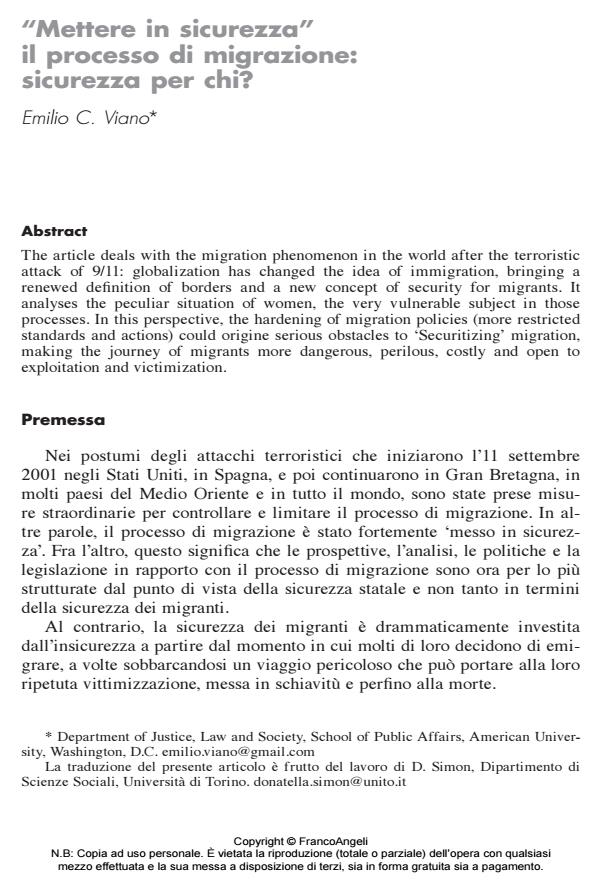"Mettere in sicurezza" il processo di migrazione: sicurezza per chi?
Journal title SICUREZZA E SCIENZE SOCIALI
Author/s Emilio C. Viano
Publishing Year 2013 Issue 2013/1
Language Italian Pages 18 P. 155-172 File size 259 KB
DOI 10.3280/SISS2013-001013
DOI is like a bar code for intellectual property: to have more infomation
click here
Below, you can see the article first page
If you want to buy this article in PDF format, you can do it, following the instructions to buy download credits

FrancoAngeli is member of Publishers International Linking Association, Inc (PILA), a not-for-profit association which run the CrossRef service enabling links to and from online scholarly content.
I propose an assessment of the main aspects of migration in Europe since 1990. The current situation is very unfavorable for a regular and stable insertion of immigrants. Millions of immigrants are integrated in Europe, but their moral and material costs are always too high. Many of them are forced to flee elsewhere or to return to their own countries. The great economic development of the past twenty-five years has been the product of millions of temporary or completely black workers (nationals and immigrants). The reproduction of irregular migration is useful for the shadow economies. The lack of any legal security has brought to a sort of neo-slavery, always combined with racial criminalization
Emilio C. Viano, "Mettere in sicurezza" il processo di migrazione: sicurezza per chi? in "SICUREZZA E SCIENZE SOCIALI" 1/2013, pp 155-172, DOI: 10.3280/SISS2013-001013